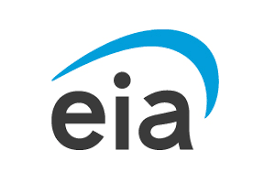· Brian Horton · Natural gas storage · 3 min read
U.S. Natural Gas Storage Climbs as Market Hopefull for Cooling Demand and August Heat
U.S. natural gas storage rose by 48 Bcf last week, pushing inventories above the five-year average. Despite the build, prices fell below $3/MMBtu as cooler weather and record production pressured demand. With August heat on the horizon, market volatility may return.

The latest natural gas storage report shows a steady build in inventories across the U.S., even as prices continue to slide. For the week ending July 25, 2025, working gas in underground storage rose by 48 billion cubic feet (Bcf), bringing total stocks to 3,123 Bcf. That’s 195 Bcf above the five-year average and 123 Bcf lower than where we were at this time last year. Despite the drop compared to 2024, overall storage remains well within historical norms for this time of year.
Regionally, all major storage areas saw gains, though the increases were modest. The East and Midwest led the way with 17 Bcf and 19 Bcf additions, respectively. The Mountain and Pacific regions added smaller volumes, while the South Central region edged up by just 3 Bcf. Within that area, salt storage actually declined by 9 Bcf, offset by a 12 Bcf gain in nonsalt facilities.
But even with storage heading in the right direction, natural gas prices are under pressure. Futures dropped to $3.02 per MMBtu— the lowest they’ve been since late April. A big factor behind the decline is the strong supply picture. Gas production in the Lower 48 states hit a new high in July, averaging 107.5 billion cubic feet per day. That’s even higher than June’s record output, showing just how robust production remains.
At the same time, the short-term demand outlook is softening. Cooler-than-normal temperatures in early August are expected to reduce the need for air conditioning, which means less gas will be burned for power generation. That’s weighed on market sentiment and kept a lid on prices despite the approaching peak summer demand season.
Still, there are hints that this bearish trend might not last. Some hotter weather is showing up in the 11–15 day forecasts, which could boost gas demand as more households and businesses crank up the A/C. There’s also the potential for liquefied natural gas (LNG) exports to bounce back, especially if global buyers return to the market after a brief slowdown.
Heading into the next report, the market had expected a build of around 45 Bcf, so the actual 48 Bcf increase was just slightly above forecast. Looking ahead, storage is projected to reach about 4.2 trillion cubic feet by the end of October. That’s a comfortable level, but any surprise drops in injections—or a surge in late-summer heat—could shake things up quickly.
In the short term, gas prices may continue to hover near the $3 mark unless weather-driven demand picks up or LNG exports show a meaningful rebound. But as August progresses, the market will be watching closely for signs of tightening supply or resurgent demand that could trigger a shift in momentum.
So while the current picture looks stable, natural gas traders and utilities alike are keeping an eye on the forecast—and the thermometer.
- natural gas storage report
- EIA natural gas update
- natural gas market analysis